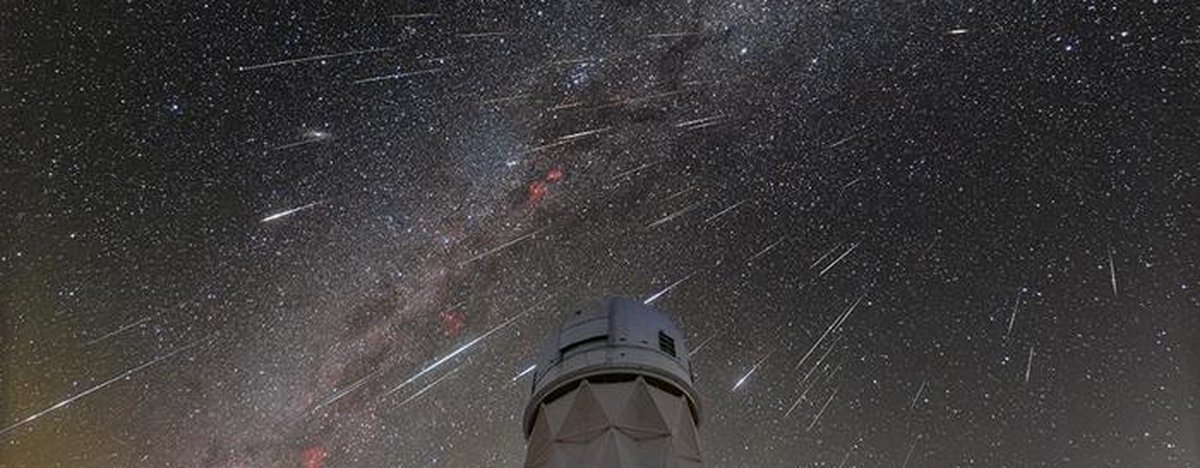Developed by the genius of Albert Einstein, General Relativity is a revolutionary theory that redefines our understanding of space, time and gravity. This document, presented more than a century ago, has been studied in depth by researchers from all over the world, looking for possible scenarios in which it does not apply.
Lately, The age-old theory of the largest distances in the Universe has been tested once again and at an unprecedented level. To do this, the researchers used the DESI instrument and mapped almost 6 million galaxies grouped together over 11 billion years of cosmic history.
DESI (Dark Energy Spectroscopic Instrument) is a state-of-the-art scientific device installed at the Nicholas U. Mayall Telescope on Mount Kitt Peak in the USA, making it possible to map the expansion of the Universe, study the universe. The nature of dark energy and Creating a large-scale three-dimensional map of the universe.
Testing Albert Einstein’s General Relativity
A type of “view beyond the reach” of conventional telescopes, DESI can quickly cover a much larger area of the sky, mapping 5,000 galaxies simultaneously. His observations are not limited to just imaging galaxies, but also analyzing their light spectra to identify the chemical elements that make them up.
The international DESI collaboration, which includes more than 900 researchers, is currently analyzing data collected from the first three years of observations. Based on these analyses, the teams recently submitted three papers hosted in the arXiv preprint repository that have not yet been peer-reviewed.
These studies provide a detailed analysis of the data obtained by DESI in its first year of operation. The research, called full shape analysis, evaluated how gravity guides galaxies into the filamentary structures of the universe. How did this cosmic network emerge? Matches exactly with the predictions of Einstein’s iconic theory.
Study of the growth of the cosmic structure of galaxies

The new analysis also improves on results from work presented in April on the clustering characteristic of galaxies known as baryonic acoustic oscillations (BAO). Fluctuation patterns in the distribution of matter in the universe arise from the sound waves of particle plasma from the first moments of the universe.
In the current analysis, the teams expanded the target to examine how galaxies and matter are distributed at different scales in the universe. Dragan Huterer, co-chair of the DESI group interpreting cosmological data from the University of Michigan in the USA, said in a statement that both the BAO results and the full analysis were “spectacular”.
“This is the first time that DESI has observed the growth of cosmic structure. We show a tremendous new ability to investigate modified gravity and improve constraints on dark energy models. And this is just the tip of the iceberg,” Huterer concluded.
DESI’s future cosmology analyzes
DESI is currently in the fourth year of the projected five-year survey. The expectation is to collect information from 40 million galaxies and quasars. This volume of data will certainly provide greater clarity about a way to integrate Einstein’s theories of general relativity and dark energy.
In March 2025, the teams will share DESI observations again, this time with results from the instrument’s first three years of observations. Speaking to New Scientist, Itamar Allali from Brown University in the USA says that he expects more effective results.
Prospects include: checking for possible variations or changes in the Hubble constant (which measures the rate of expansion of the universe), better assessing the mass of nearly invisible neutrinos, and who knows, finding new cosmic components such as dark radiation. “This analysis will carry much more weight than gravity, it will weigh on the entire cosmology,” Allali promises.
Did you like the content? So always stay up to date with more studies like this on TecMundo and take the opportunity to discover 8 real-life examples of Einstein’s theory of relativity.
Source: Tec Mundo
I’m Blaine Morgan, an experienced journalist and writer with over 8 years of experience in the tech industry. My expertise lies in writing about technology news and trends, covering everything from cutting-edge gadgets to emerging software developments. I’ve written for several leading publications including Gadget Onus where I am an author.













